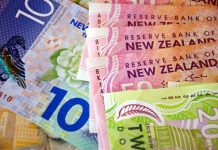Banks were on the chopping block on Wednesday, after Saudi National Bank’s Chairman Mr. Al Khudairy told Bloomberg TV that they wouldn’t inject more money to Credit Suisse (CS) as they already hold 9.9% of the bank and going above 10% would mean further regulatory and statutory requirements.
Credit Suisse stock sold off to a fresh record. At its worst, the stock was down by more than 30% and closed the session with a 24% loss.
The selloff in CS shares spread to other bank shares as well, and the bank stocks pulled the market down with them.
The SMI index lost 1.87%, the Stoxx 600 dived 2.92%, the DAX plunged more than 3%, the bank-heavy FTSE 100 shed almost 4%. In the US, the S&P500 was also under a decent selling pressure led by banks, yet the news that the Swiss National Bank (SNB) would provide liquidity to Credit Suisse in case of need, and the confirmation from the Swiss watch-dog FINMA that CS meets the higher capital and liquidity requirements applicable to systemically important banks – that both came after the European market close – helped the US stocks paring some losses.
The S&P500 closed the session only around 0.70% down, while Nasdaq gained 0.42%. If the bank risk is contained, the falling yields look appetizing for stock investors.
The global yields were on a sharp decline again yesterday. The US 2-year yield slumped more than 8.5% to 3.72%, while the German 2-year yield fell to the lowest since the beginning of the year, to around 2.35% as investors cut their European Central Bank (ECB) rate expectations, again.
According to the latest news, Credit Suisse agreed to borrow as much as 50 billion francs from the SNB and offered to repurchase debt to improve market confidence.
What will the ECB do?
With yesterday’s fresh stress on bank stocks, a 50bp hike from the ECB at today’s monetary policy meeting is less than certain.
Although the hotter-than-expected inflation data from France would’ve granted a 50bp hike, and a few more to come, the ECB may opt for a softer rate hike, or no rate hike at today’s meeting, to let the dust settle before acting further.
But maybe, the ECB will remain on course and hike by 50bp today.
It’s hard to tell. The visibility on monetary policies from the big central banks is heavily lessened by the banking stress and it’s difficult to foresee how much weight the policymakers will give to the bank stress versus inflation.
Today, the ECB has the difficult task to be the first major central bank to decide what to do amid the banking crisis. It’s decision could change the expectations for other central banks.
For now, the base case scenario for next week’s Bank of England (BoE) meeting is no hike.
While activity on Federal Reserve (Fed) funds futures still points at a 25bp hike next week, with around 65% chance, as of this morning.
But swaps now price in a 100bp cut from the Fed by December, and the peak rate is now seen at 4.85%, down from 5.6% last week, after Fed Chair Powell’s speech to the US Senate, when Powell didn’t know that winds would abruptly change direction a few hours later.
On the data front, happily for the Fed, a soft set of data from the US yesterday showed that the producer price inflation unexpectedly fell in February. Retail sales, which jumped 3.2% last month and fueled inflation fears, fell more than expected in February. And the Empire Manufacturing index plunged to -24, much worse than a decline to -8 expected in March.
FX and energy
The US dollar index rebounded after hitting 50-DMA earlier this week.
The rebound in the US dollar sent the EURUSD shortly below its 100-DMA. The pair is around the 1.06 mark at the time of writing.
Where the euro is headed next will depend on the ECB decision. A 50bp hike from the ECB should help the single currency extend gains against the greenback, while anything less than a 50bp hike today could encourage a further selloff. The major support on the EURUSD daily chart stands at 1.0473, the major 38.2% Fibonacci retracement on September to February rally. A fall below this level will send the euro into the bearish consolidation zone against the greenback.
On the energy front, the bank stress weighed heavily on energy prices as it worsened the prospects of global growth – and that despite the set of good economic data from China.
The barrel of American crude slumped to $65 per barrel yesterday. Saudi Arabia energy minister Prince Abdulaziz bin Salman said that OPEC+ will stick to production cuts agreed upon in October until the end of the year, but the attention is heavily on the demand side right now. Therefore, it is well possible that the $70pb level, which acted as a strong support since the end of last year becomes the new resistance.













